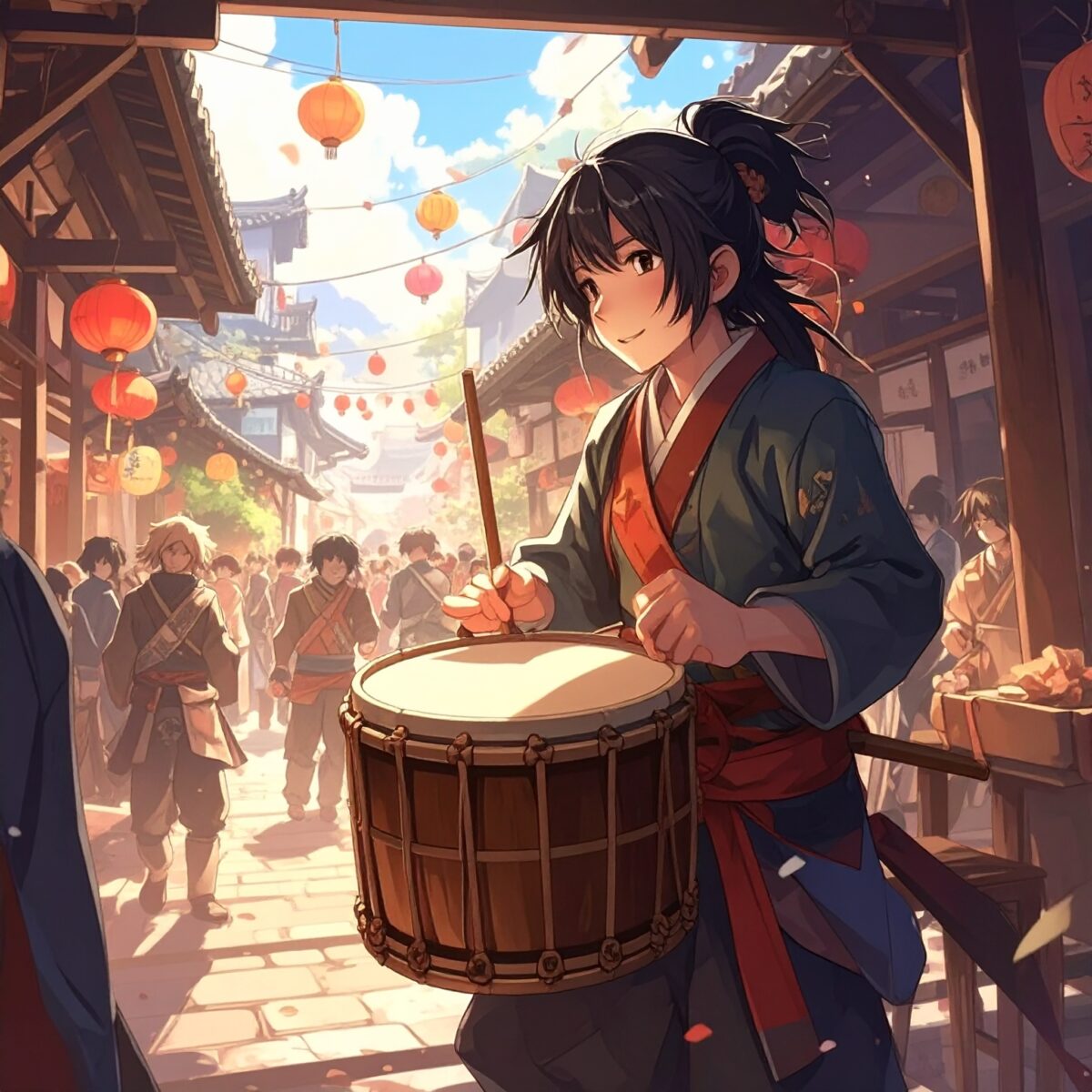The distant sound of taiko drums stirs something deep within—it’s a call to gather, a vibration that fills the air and unites hearts. At festivals throughout Japan, taiko drums serve not merely as instruments, but as the very breath of the celebration—pulsing with the spirit of the local community. Playing one yourself isn’t just a musical experience—it’s a full-body encounter with culture, rhythm, and energy.
In this hands-on program, participants are invited to try out traditional taiko used in festivals, such as the deep-voiced odaiko and the taut, sharp shime-daiko. Beginners are warmly welcomed, with instructors carefully explaining how to grip the drumsticks (bachi), how to stand, and how to produce a resonant sound. Rather than relying on brute strength, taiko playing emphasizes coordination with the entire body—using breath, posture, and flow to create rhythm. As the session progresses, participants often find their movements and breathing naturally coming into sync.
The rhythm exercises are based on authentic festival patterns, and participants repeat traditional phrases like don-doko-don-don in time with the instructor. Before long, the beats start to settle into one’s body, and when the rhythms align with others in the group, a thrilling sense of unity takes hold. Even without prior musical experience, the deep vibrations of the taiko are felt through the whole body, making the experience intuitive and accessible for both children and adults.
Many families participate together. For a child, striking the same grand taiko as an adult brings an empowering sense of achievement. Parents can either cheer on from behind or join in, drumming side-by-side in a shared rhythm that feels different from everyday interactions. The simple act of beating the drum together naturally gives rise to smiles, applause, and spontaneous encouragement—drawing participants closer to each other, beat by beat.

Taiko drum experiences are often held in community-based locations such as local festival preservation halls, cultural centers, or neighborhood buildings where floats and portable shrines are stored. In these authentic settings, the sound of the drum carries a raw, unfiltered energy—not a performance for show, but a living heartbeat of the festival’s spirit. Being in these spaces offers participants a behind-the-scenes glimpse into the cultural lifeblood of Japan’s local communities.
Some programs include opportunities to try on traditional festival garments or watch archival footage of actual events. These added elements deepen the experience, helping participants understand not just how taiko is played, but why—what each rhythm signifies and how it fits into the larger celebration. By learning about the history and cultural meanings behind the beats, participants move from simply “hearing” the sound to truly “understanding” it.
This hands-on experience is especially popular with international visitors, as taiko transcends language and musical background. Many programs offer multilingual support, rhythm charts, and cultural explanations to ensure accessibility. As a gateway into the world of Japanese festivals, it provides an engaging and approachable way to connect with tradition.
The sound of the taiko resonates directly with the body and soul. The intensity of each strike, the interplay of overlapping rhythms, and the resulting shift in atmosphere are all deeply physical. Creating that shift with your own hands transforms drumming from mere performance into meaningful participation—a powerful way to touch the core of Japanese cultural identity.
Even outside the festival season, the act of playing taiko lets you feel its heat and heartbeat. And long after the journey ends, the rhythms remain—quietly echoing within you as a personal memory of Japan, carved not only in sound, but in your body’s own rhythm.




